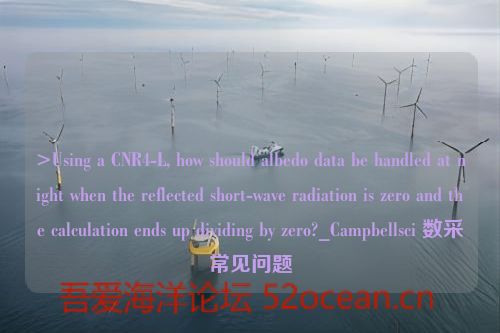Technically, because albedo is the fraction of the sun’s radiation reflected from a surface, albedo cannot be quantified at night.
When calculating albedo, it is important to remember that when radiation readings are very low, there is a significantly large error associated with the ratio. For example, as the sun drops to a lower position on the horizon, the ratio of reflected and incoming radiation becomes somewhat meaningless.
Albedo can be calculated from the simultaneous incoming and reflected pyranometer readings, with the average stored. Both of these pyranometer signals should be in a differential input mode.
- At night-time, the upper pyranometer faces a cold sky, which causes the domes to cool and the readings to be negative. (For example, there may be readings of -2 to -7 W/m2, depending on the sky conditions.)
- In contrast, the lower pyranometer faces the ground, which could be warmer or cooler. The readings are unlikely to be positive, and may even be -2 W/m2.
In principle, two negative values could result in a night-time albedo of 0.5.
Because of the input resolution, noise, and offsets of the data logger used, it is highly unlikely that any individual pyranometer reading is exactly zero. Depending upon the configuration used, any positive irradiation values recorded by the data logger as less than 2 W/m2 may, actually, be less than zero.
If an upper pyranometer reading, a lower pyranometer reading, or both is/are less than 2 W/m2, the albedo value should be described as “undefined” or “invalid.”
Another approach is to just not calculate albedo when the flux values get small. For example, set a cut-off point for the minimum flux value that will be used in albedo calculations.
If solar position is being calculated, one other approach is to use a solar position calculation, such as 1° above the horizon.

